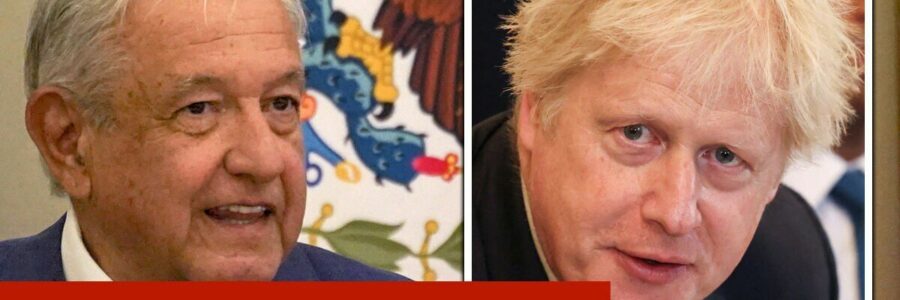
Brexit bonanza! Talks begin on new £4BILLION Mexico trade deal set to be bigger than EU’s
Penny Mordaunt discusses post-Brexit UK-US trade deal
We use your sign-up to provide content in ways you’ve consented to and to improve our understanding of you. This may include adverts from us and 3rd parties based on our understanding. You can unsubscribe at any time. More info
The UK has fired the starting gun on negotiations for a new, deeper agreement with the Central American country to boost British exports and take advantage of the “immense opportunities” on hand. Mexico is one of the world’s largest consumer markets, with a population projected to reach nearly 150 million by 2035.
Negotiations were confirmed after International Trade Secretary Anne Marie Trevelyan met with her Mexican counterpart, Tatiana Clouthier, in London today.
It is hoped the deal will help reduce bureaucratic paperwork and remove tariffs that hold back small businesses from trading with the country.
Britain already has a trade deal with Mexico, operating on the same terms as when the UK was a part of the EU.
But ministers hope the talks will allow the two partners to go further and make a “Mexico 2.0” deal that deepens trade in areas like services and technology.

The agreement could increase trade flows across the financial, creative, digital and technology services sectors.
Ms Trevelyan said: “This enhanced deal would transform our relationship with Mexico, making the most of the immense opportunities its dynamic business landscape and young, growing population offer.
“From autonomous vehicle manufacturers in the West Midlands, to Wales’ green tech businesses and Scotland’s thriving food and drink sector, companies of all shapes and sizes across the UK stand to benefit.
“Trade deals like this are vital to growing the economy to address the cost of living, as they support jobs, help businesses thrive and spur investment.
“We’ve already kick-started negotiations with India and Canada and are close to joining the CPTPP [Comprehensive and Progressive Agreement for Trans-Pacific Partnership] free trade area, with a combined GDP of £9trillion, of which Mexico is a key member.”
Compared with the current 20-year-old EU deal that the UK trades under with Mexico, negotiators are aiming to secure tariff reductions worth £5 million per year and to ensure tariff-free trade on 97 percent of UK goods.


Officials said an ambitious services commitment could increase domestic insurance sector opportunities by around £80million, while exports of financial services could also increase by around £20million.
The new talks have been welcomed by the Confederation of British Industry (CBI).
CBI President Lord Bilimoria said: “The Government did a remarkable job securing the continuity agreement with Mexico.
DON’T MISS:
Macron and Scholz say no! EU passes blame for Brexit row [REACTION]
EU pressuring bank bosses to move out of London [INSIGHT]
First Brexit trade deal with US on the brink of completion [UPDATE]

“There is now a phenomenal opportunity to strengthen our existing economic ties including in services, digital, and investment.
“International trade is the foundation for economic growth. With exporters among the UK’s most profitable and innovative businesses, firms up and down the country should be seizing on the huge untapped potential globally.
“Finding new opportunities in emerging markets such as Mexico will be key to that success.”
Outside of the EU, the UK is now free to do its own trade deals on its own terms.
Securing world-beating agreements with countries across the globe has been a key part of the Government’s vision for post-Brexit Britain.
The latest talks are the third major free trade agreement negotiations launched by Ms Trevelyan this year following visits to India in January and Canada in March.
Britain is also set to be accepted into the CPTPP by the end of the year.
The 11 strong trade partnership consists of Australia, Brunei, Canada, Chile, Japan, Malaysia, Mexico, New Zealand, Peru, Singapore, and Vietnam and is worth 13 percent of global GDP.
Source: Read Full Article